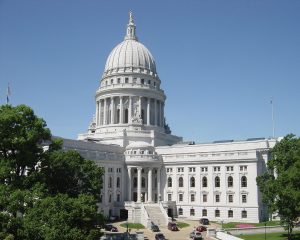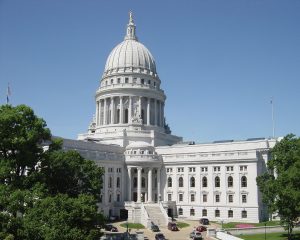About four years ago I wrote a blog post titled “The Quiet Revolution in Wisconsin Administrative Law.” My purpose then was to point out an “unprecedented makeover in longstanding principles of state-level administrative law” that “shift[ed] power away from agencies and toward  courts, the legislature, and the governor.” Last week the Wisconsin Supreme Court finally took the field to address that trend, issuing two opinions in companion cases that effectively loosened one of the key new legislative constraints on agency authority. As a result, the pendulum has swung back toward increased agency discretion and clout. The opinions are also important because they continue a recent revival of the Wisconsin public trust doctrine, reversing a slide that I identified in a 2016 blog post.
courts, the legislature, and the governor.” Last week the Wisconsin Supreme Court finally took the field to address that trend, issuing two opinions in companion cases that effectively loosened one of the key new legislative constraints on agency authority. As a result, the pendulum has swung back toward increased agency discretion and clout. The opinions are also important because they continue a recent revival of the Wisconsin public trust doctrine, reversing a slide that I identified in a 2016 blog post.
The court granted review in the two cases (both captioned Clean Wisconsin v. Wisconsin Department of Natural Resources (2021 WI 71 and 2021 WI 72)) to address one of the issues I focused on in the 2017 post: the scope of Wis. Stat. § 227.10(2m). That statute provides that no agency may implement any “standard,” “requirement,” or permit condition unless the condition has been “explicitly required or explicitly permitted’ by statute or by rule. The resulting opinions, joined by an unusual mix of justices in a four-vote majority, limit the statute’s influence and slow down the “quiet revolution.”
In the first case (2021 WI 71), the court addressed whether the Wisconsin Department of Natural Resources (WDNR) had “explicit authority” under § 227.10(2m) to impose two conditions in a wastewater discharge permit that WDNR issued to a concentrated animal feeding operation. One of the conditions required the CAFO to perform certain offsite groundwater monitoring and the other limited the number of “animal units” the CAFO could permissibly maintain. The case turned on a question of statutory interpretation: whether “explicit” means “specific,” in other words, whether under § 227.10(2m) the authority to impose the two disputed conditions must be spelled out via “literal enumeration or verbatim mention” of the conditions in a statute or rule, or whether the authority must simply be “expressly conferred and clear.”
The court concluded that even though no statute or rule spelled out verbatim the authority to impose the conditions, the legislature had explicitly conferred broad authority on WDNR through Wis. Stat. § 283.31(3)-(5), provisions that charge WDNR with administering the wastewater permitting program and give it the authority to “prescribe conditions for permits” that assure compliance with the law. The court reasoned that an agency “may rely upon a grant of authority that is explicit but broad when undertaking agency action.” Such broad grants of authority, the court found, comply with the requirements of § 227.10(2m). WDNR therefore had the power to impose the two challenged permit conditions.
The second case (2021 WI 72) posed an issue I have also studied: the extent of WDNR’s authority to impose conditions on high capacity well approvals under the public trust doctrine when it finds that operating the proposed well may harm other waters of the state (usually via drawdown). In a 2011 case, Lake Beulah Management District v. WDNR, the court determined that under the public trust doctrine, WDNR had both the authority and the duty to impose such conditions if necessary to protect the waters of the state. The question in the present dispute was whether § 227.10(2m), enacted around the same time, changed the law so as to render Lake Beulah Management District ineffectual—because, of course, the public trust doctrine is a common law source of authority that is not “explicitly” enumerated anywhere in a Wisconsin statute or agency rule. Attorney General Kaul and former Attorney General Schimel issued opinions coming down on opposite sides of that very question, adding to the confusion.
In last week’s opinions, the court ultimately determined WDNR still has the authority to impose such public trust based conditions on HCW permits, siding with AG Kaul and meaning that Lake Beulah Management District remains good law. The court found sufficient the legislature’s grant to WDNR of broad power in Wis. Stat. § 281.11 (DNR charged with “general supervision and control over the waters of the state”) and Wis. Stat. § 281.12 (DNR has all “necessary powers” to protect the waters of the state). Further, Wis. Stat. §§ 281.34-35 provide explicit authority for WDNR to impose conditions on a permitted well to protect other waters of the state, the court found. Taking a similar tack to the analysis that resolved the first case, the court held that explicit authority can be broad so long is it is clearly expressed. This holding drew a spirited dissent from Justice Rebecca Grassl Bradley, who argued that the majority had “defie[d] the . . . legislature, warp[ed] the plain language of enabling statutes, and afford[ed] administrative agencies and unelected bureaucrats the power to override the legislature . . . .”
The court resolved the issue using language that may rejuvenate the public trust doctrine in Wisconsin. First, it reiterated that “[a]ny analysis of agency actions affecting the state’s navigable waters must start with the public trust doctrine,” an important statement of priority made in a 2006 opinion that the court has shied away from in recent years. Second, the court described the doctrine’s scope as “broad” and “sweeping” both in terms of its geography and its purpose. As to the latter, the court cited with approval previous opinions describing not only the traditional activities of commerce and fishing, but also recreation and other purposes. Perhaps this signals a return to the expansive construction the court gave the doctrine in decades gone by, rather than the more limited reading it has favored in recent years. However, the court did recognize that the doctrine does not apply to non-navigable wetlands above the ordinary high water mark, or to non-navigable land.
The public trust doctrine has been the focus of several pieces of research ongoing or recently completed here at the Law School. Most significantly, Lakefront, the new book co-authored by Dean Joseph Kearney and Professor Thomas Merrill of Columbia Law School, untangles the origins of the American experiment with the doctrine in the context of the history of the Chicago lakefront; for more details about the remarkable book, see the previous posts here and here. The Water Law and Policy Initiative is also in the middle of a data-driven analysis of the processing of high-capacity well applications in Wisconsin under different iterations of the public trust doctrine. The opinions in the two Clean Wisconsin cases will no doubt provide much food for thought to practitioners and scholars alike.


This is another excellent, concise and exceptionally clear analysis by Professor Strifling. His work is a real asset for the body of environmental law and analysis in Wisconsin.